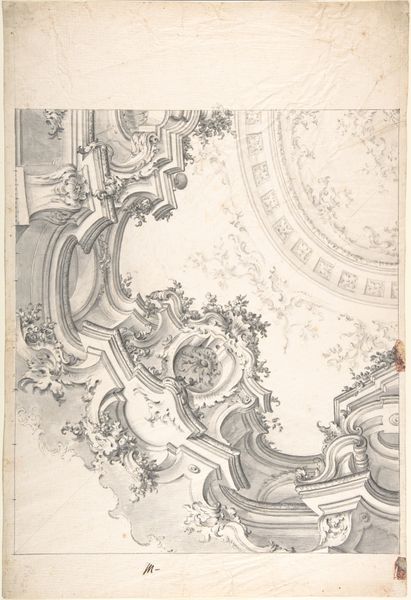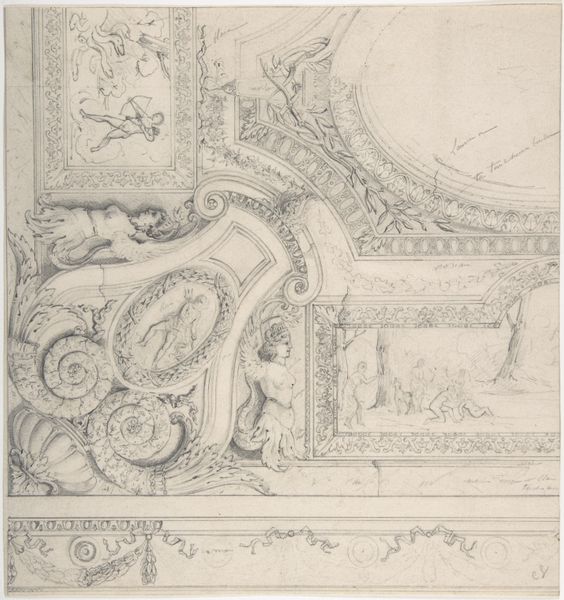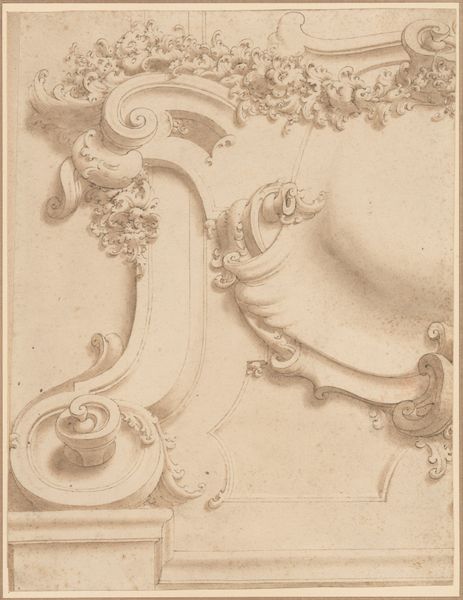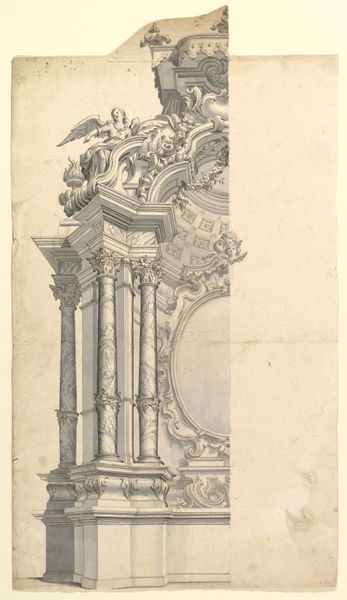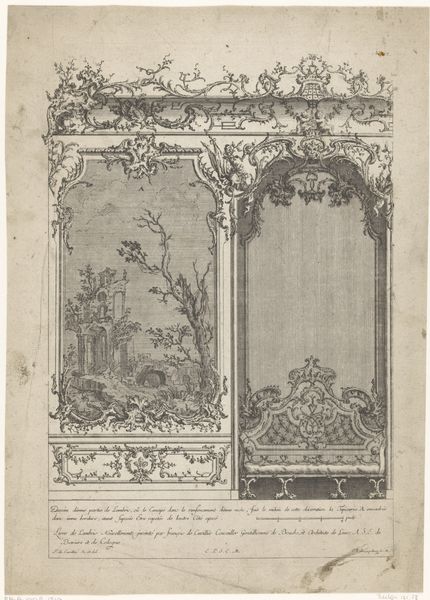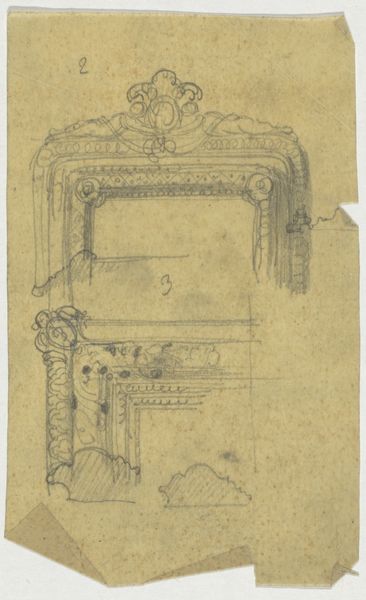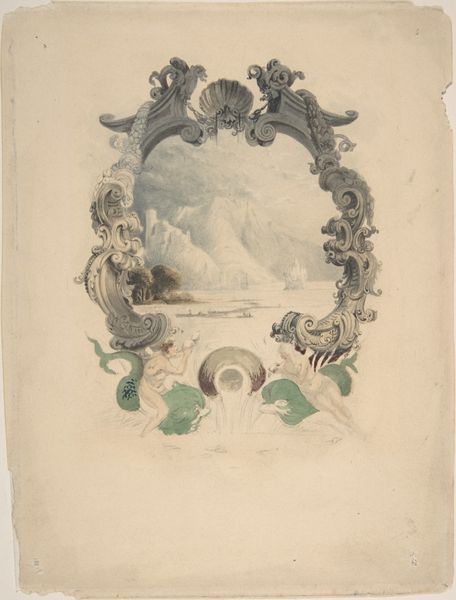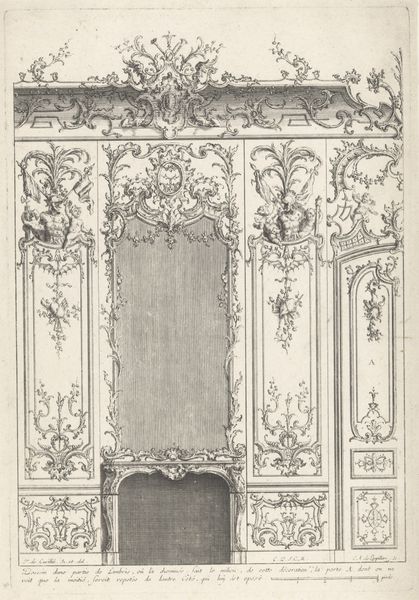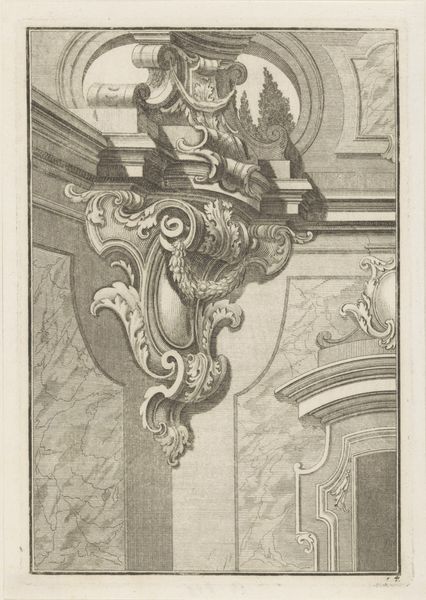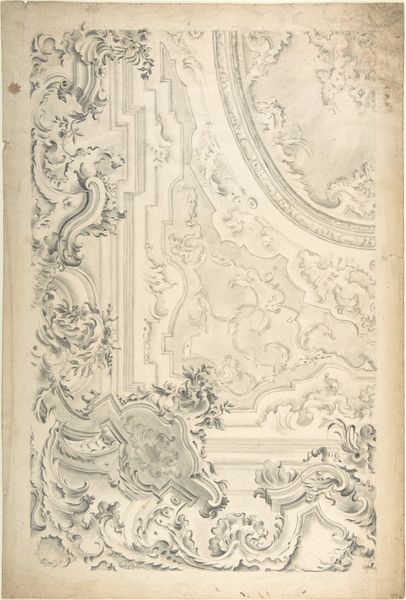
drawing, print, ink, architecture
#
drawing
#
ink drawing
# print
#
pen sketch
#
ink
#
geometric
#
academic-art
#
architecture
Dimensions: 11-11/16 x 9-1/4 in
Copyright: Public Domain
Curator: Here we have "Architectural Capriccio," an ink drawing made sometime between 1700 and 1800. What strikes you first about this architectural sketch? Editor: Its unfinished quality lends a dreamlike atmosphere. The meticulous detail juxtaposed with the ethereal washes creates a feeling of being caught between worlds. What exactly are we looking at? Curator: Indeed. An 'architectural capriccio,' you see, often depicts fantastical or imaginary buildings, or puts familiar structures in unexpected arrangements, inviting commentary on social spaces. This one, an anonymous work now held at the Metropolitan Museum of Art, feels deliberately fragmentary. Editor: The eagle, for example, prominent on one of the architectural elements, is fascinating. Eagles often signify power, victory, or even divine authority across different cultures. How does this image of the eagle intersect with those readings within its sociopolitical period? Curator: Given that this piece was composed between 1700-1800, it could point to Enlightenment ideals or even nascent concepts of nationalism rising. The architecture itself feels classical, yet its arrangement suggests critique. Does that herald social reform? A call for democracy perhaps? The very definition of caprice, implying a whimsical impulse towards a specific sociopolitical direction? Editor: The Corinthian columns evoke classical notions of order, logic, and refined reason. In tension with the Eagle this is a potential conflict between empire and reason? The unfinished elements become pregnant with meanings unfulfilled or promises still being debated. Curator: Precisely! It pushes us to consider power structures within civic planning itself. Whose visions are memorialized in stone and why? Which cultural elements are chosen, and which get ignored or repressed? The medium being "just" ink allows the art to explore tentative ideas around change and reform. Editor: And the choice to leave portions incomplete…that encourages the viewer to become actively involved in imagining and re-imagining not just architecture, but perhaps the potential of new political and social designs. The sketch asks for continued action to "complete" the building process for true power. Curator: An empowering thought, indeed. It serves as a potent reminder that the very concept of social infrastructure remains in perpetual construction, vulnerable to historical forces, and receptive to the enduring spirit of revolution. Editor: What a wonderfully challenging piece to inspire those that reflect. Thank you for this reflection.
Comments
No comments
Be the first to comment and join the conversation on the ultimate creative platform.
